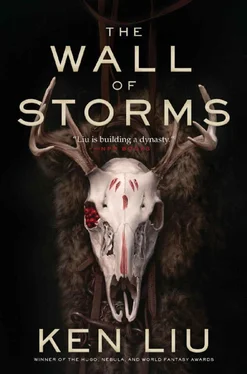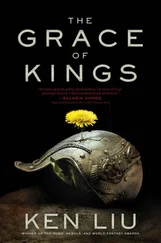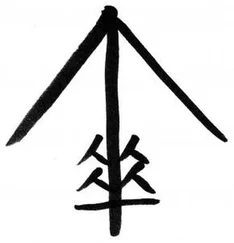The rowers in all five boats dipped their oars into the water and held on, letting the blades of the oars act as brakes. This was a contest of strength. The rowers had to place as much strain as possible on the whale while preventing it from diving and escaping.
Their goal was to tire the whale, not to kill it.
This was because the most precious material in a dome-headed whale was not the head wax, but the living amber—a soft, waxy material secreted by the whale’s gut. The amber had a sweet smell that was unearthly, and it was highly prized as an ingredient in perfume, incense, medicine, and industry.
Living amber was best harvested by having the whale vomit it up. Since the living amber was far more valuable than the rest of the whale put together, the best whalers learned to tire the whales out with a long chase until they vomited up the precious material before letting them go so that they could grow more living amber for the next season. The whalers were like farmers who picked up after the goose laying the jeweled egg rather than killing it, thereby cutting off future profit.
The dome-headed whale was heading straight for the coast of the Big Island. This was rather unusual—whales typically headed for the deep sea when struck by a harpoon—but not unheard of.
But it was very unusual to have the whale continue to swim with such vigor half an hour after being struck. The crews on the whaleboats were rather pleased. The closer the whale came to land before vomiting from exhaustion, the less distance the crews had to row to get back to land. It was like getting a free ride.
As the whale approached the shore, it didn’t even slow down.
“Is it going to beach itself?” asked one of the men.
“Just our luck to get a whale that doesn’t want to live,” said another, regret in his voice. The whalers who hunted the dome-headed whale tended to bond with the majestic creatures over time. Since their task was not slaughter but the extraction of a valuable resource from creatures they intended to keep alive, a suicidal whale was a cause for sorrow.
“Hold on tight!” the young man who had thrown the harpoon shouted.
Plunging through the surf, the whale slid right onto the beach, opened its toothed maw, and vomited.
Great globs of gray-black living amber cascaded onto the beach, having the consistency and appearance of lava that was just beginning to congeal. Children playing on the beach screamed in delight, knowing that this was a good haul for the whalers. They went up to the still-heaving body of the whale to examine the bounty and to see if they could perhaps help the whale by pushing it back into the sea.
The children gathered and stared at the mass of living amber. The smell was pungent, strong, a complex combination of musk, earth, camphor, and herbs.
The mess was moving.
The children screamed.
The figure of a man emerged, crawling on his hands and knees, covered in the waxy substance. He spat and coughed and retched.
“Kill the whale,” he rasped.
Then he collapsed and stopped moving.
PAN: THE FIRST MONTH IN THE FIRST YEAR OF THE REIGN OF SEASON OF STORMS.
The man from the belly of the whale stood before the Dandelion Throne, and as Empress Üna and Empress Jia watched, began his hesitant, halting speech.
“I am called Takval Aragoz, the son of Souliyan Aragoz, the daughter of Nobo Aragoz, last Pékyu of Agon….”
He relied on simple words accompanied by many gestures, but the import of what he was saying was clear enough.
After the conquest of Gondé by Pékyu Tenryo, the Agon were scattered to the ends of the scrublands, enslaved to the tribes of the Lyucu.
Away from the fresh lakes, away from the flowing rivers, away from the meltwaters from the distant snowy mountain peaks, the Agon struggled to eke out an existence in the deserts of the south, in the harsh ice fields of the north, in the barren mountains of the east.
Such was the fate of those who lost. By the laws of the scrublands, the weak submitted to the strong.
In the year that Takval turned twelve, messengers from Pékyu Tenryo’s Great Tent in Taten came to every Agon settlement and announced that each family had to supply a child to the pékyu as tribute.
Takval’s mother, Souliyan, was actually the youngest daughter of Nobo Aragoz, the last Agon pékyu. She and her brother, Volyu Aragoz, had been spared in the slaughter of the Aragoz family because their mothers were slaves and Nobo had never formally acknowledged his paternity. Still, Souliyan and Volyu were treated by the surviving Agon as their only connections to their ancient glory.
But even the former First Family was not spared by Tenryo’s order, and Takval Aragoz, descendant of the last pékyu, went to the capital.
There he became one of the pékyu’s grooms. He cared for the garinafins, fed them, watched over the hatchlings, and shoveled their dung. He also got to know the other slaves well.
Several of the slaves were survivors of Admiral Krita’s expedition. From them he learned the language of Dara and heard the tales of the wonders of that distant land. He heard about windmills and water mills, about weapons of bronze and steel, about airships that could stay aloft for weeks, and clever men who could imagine and build ships that were as large as mountains.
For most of the other slaves, these stories served as nothing more than idle entertainment in the evenings, but for Takval, they were something more. They spoke of hope.
Then, in the year he turned nineteen, Pékyu Tenryo announced that he was sending an army to conquer the glorious paradise to be found in the distant land of Dara.
Like the other slaves and Lyucu warriors and thanes who would stay behind, he stood at the shore and watched the fleet of city-ships depart. While he went through the motions of cheering with the others, in his heart he yearned to go with them. But his goal wasn’t to witness Pékyu Tenryo’s triumph.
Two years later, his opportunity came.
Prince Cudyu announced a second expedition to Dara to help secure the fruits of Pékyu Tenryo’s conquest—there had been no news of the first expedition, but how could anyone doubt that the pékyu had succeeded?
Takval volunteered to be a rower in this second fleet. Though few Agon slaves were trusted, Takval had distinguished himself with his extraordinary devotion to the care of the pékyu’s garinafins, and Prince Cudyu approved his request.
The second fleet launched on a summer morning. This time, besides warriors, garinafins, and cattle, the city-ships were also laden with families—grandmothers, grandfathers, young boys and girls and nursing babies, trusted family slaves—the Lyucu were not just going to conquer; they were also going to settle.
One morning, six months into their voyage, Takval overheard the captain talking late at night with his senior officers. Without the assistance of the clever Dara barbarian Luan Zya, the calculations for the second expedition had been off. They were running out of supplies, and the proposed solution was to toss some of the slaves overboard, starting with the Agon.
And so Takval Aragoz came up with a daring plan. Late one night, he overcame the guards of the watch on deck, stole one of the coracles carried by the city-ships, and filled it with the goods that he would use to bargain for the future of his people. Before they had discovered his treachery, he was in the water and rowing away.
By the time the morning sun rose, the fleet was out of sight. He had no idea how he was going to go through the legendary Wall of Storms, only that he had to get away, that he had to try. He drifted with the current, dreaming of the fantastic land of Dara.
Читать дальше














